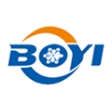The number of louvered fin slits in a finned tube heat exchanger
The number of louvered fin slits in a finned tube heat exchanger
The specific number of slits depends on various factors, including the type of fins, the application scenario, and the desired performance requirements. Below is an introduction to the number of slits in louvered fins:
1. Fin types: Different types of fins (such as curved louvers, square louvers, etc.) may have varying designs in terms of the number of slits.
2. Application scenarios: In environments with alternating dry and wet operating conditions, the number of slits may need to be adjusted to accommodate different heat exchange and resistance characteristics requirements.
3. Performance requirements: The selection of the number of slits should also consider the required heat exchange efficiency and fluid resistance characteristics.
The influence of the number of slits on heat exchanger performance
Research indicates that when the number of slits ranges from 3 to 7, both the Nu (Nusselt number) and f (friction factor) on the fin side increase with the number of slits, but the rate of increase gradually diminishes. When the number of slits is set to 5, the best overall performance is typically achieved.
Application scenarios and advantages of louvered fins
Louvered fins are particularly suitable for applications requiring enhanced heat transfer on the air side. Their slotted design not only disrupts the boundary layer on the fins, reducing its thickness, but also increases turbulence in the flow channels, further improving heat exchange efficiency.
In summary, the number of slits in louvered fins is a critical parameter determined through engineering practice and research, which directly affects the performance and efficiency of the heat exchanger. It is recommended to select an appropriate number of slits based on specific requirements and conditions in practical applications, with reference to relevant research and design standards.
The louvered fin is different from the corrugated fin. It is primarily designed to enhance heat exchange efficiency when fluid flows parallel to the wind direction. Its structure features many elongated louvers. These louvers offer several advantages: they make the fin sturdier and less prone to damage, while also narrowing the gaps between fins, reducing the likelihood of gas leakage. Most manufacturers use louvered fins for the evaporator in indoor air conditioning units.
The louvered fin is only attached on one side, allowing the fluid to flow more smoothly for efficient heat exchange. When the fluid flows along the direction of the fin, the louvered design ensures even distribution across all channels, resulting in more uniform and effective heat transfer. Additionally, this design simplifies the production and installation of the fins.
The louvered fins are widely used in the evaporators of refrigeration equipment. They significantly improve the heat exchange efficiency of the evaporator, allowing the refrigerant to absorb heat from the air more effectively, thereby enabling faster cooling.


